The Scorpii AR System
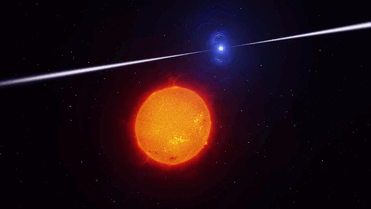
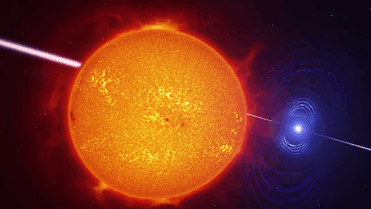
The Scorpii AR system
In the system AR Scorpii a rapidly spinning white dwarf star powers electrons up to almost the speed of light. These high energy particles release blasts of radiation that lash the companion red dwarf star, and cause the entire system to pulse dramatically every 1.97 minutes with radiation ranging from the ultraviolet to radio.
The star system AR Scorpii, or AR Sco for short, lies in the constellation of Scorpius, 380 light-years from Earth. It comprises a rapidly spinning white dwarf, the size of Earth but containing 200,000 times more mass, and a cool red dwarf companion one third the mass of the Sun, orbiting one another every 3.6 hours in a cosmic dance as regular as clockwork.
Read more at: cosmosmagazine & astronomynow
More Posts from Ocrim1967 and Others

cosmic microwave background
The cosmic microwave background (CMB) is electromagnetic radiation as a remnant from an early stage of the universe in Big Bang cosmology. In older literature, the CMB is also variously known as cosmic microwave background radiation (CMBR) or “relic radiation”. The CMB is a faint cosmic background radiation filling all space that is an important source of data on the early universe because it is the oldest electromagnetic radiation in the universe, dating to the epoch of recombination.
With a traditional optical telescope, the space between stars and galaxies (the background) is completely dark. However, a sufficiently sensitive radio telescope shows a faint background noise, or glow, almost isotropic, that is not associated with any star, galaxy, or other object. This glow is strongest in the microwave region of the radio spectrum. The accidental discovery of the CMB in 1964 by American radio astronomers Arno Penzias and Robert Wilson was the culmination of work initiated in the 1940s, and earned the discoverers the 1978 Nobel Prize in Physics.

The discovery of CMB is landmark evidence of the Big Bang origin of the universe. When the universe was young, before the formation of stars and planets, it was denser, much hotter, and filled with a uniform glow from a white-hot fog of hydrogen plasma. As the universe expanded, both the plasma and the radiation filling it grew cooler. When the universe cooled enough, protons and electrons combined to form neutral hydrogen atoms. Unlike the uncombined protons and electrons, these newly conceived atoms could not absorb the thermal radiation, and so the universe became transparent instead of being an opaque fog. Cosmologists refer to the time period when neutral atoms first formed as the recombination epoch, and the event shortly afterwards when photons started to travel freely through space rather than constantly being scattered by electrons and protons in plasma is referred to as photon decoupling.

Basically, cosmic microwave background radiation is the fossil of light, resulting from a time when the Universe was hot and dense, only 380,000 years after the Big Bang.
Cosmic microwave background radiation is an electromagnetic radiation that fills the entire universe, whose spectrum is that of a blackbody at a temperature of 2.725 kelvin.

Cosmic microwave background radiation, along with the spacing from galaxies and the abundance of light elements, is one of the strongest observational evidences of the Big Bang model, which describes the evolution of the universe. Penzias and Wilson received the Nobel Prize in Physics in 1978 for this discovery
source, source in portuguese
images credit: Image credit: Institute of Astronomy / National Tsing Hua University/ NASA/ESA Hubble, wikipedia
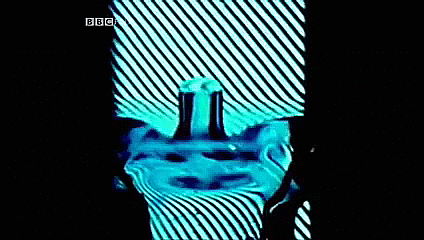

Superfluidity consists of an anomalous liquid state of quantum nature which is under a very low temperature behaving as if it had no viscosity and exhibiting an abnormally high heat transfer. This phenomenon was observed for the first time in liquid helium and has applications not only in theories about liquid helium but also in astrophysics and theories of quantum gravitation.
Helium only ends boiling at 2.2 K and is when it becomes helium-II (superfluid helium), getting a thermal conductivity increased by a million times, in addition to becoming a superconductor. Its viscosity tends to zero, hence, if the liquid were placed in a cubic container it would spread all over the surface. Thus, the liquid can flow upwards, up the walls of the container. If the viscosity is zero, the flexibility of the material is non-existent and the propagation of waves on the material occurs under infinite velocity.

Because it is a noble gas, helium exhibits little intermolecular interaction. The interactions that it presents are the interactions of Van der Waals. As the relative intensity of these forces is small, and the mass of the two isotopes of helium is small, the quantum effects, usually disguised under the thermal agitation, begin to appear, leaving the liquid in a state in which the particles behave jointly, under effect of a single wave function. In the two liquids in which cases of superfluidity are known, that is, in isotopes 3 and 4 of helium, the first is composed of fermions whereas the second is composed of bosons. In both cases, the explanation requires the existence of bosons. In the case of helium-3, the fermions group in pairs, similar to what happens in the superconductivity with the Cooper pairs, to form bosons.

Helium’s liquidity at low temperatures allows it to carry out a transformation called Bose–Einstein condensation, in which individual particles overlap until they behave like one big particle.
Superfluid in astrophysics
The idea of superfluids existed within neutron stars was proposed by Russian physicist Arkady Migdal in 1959. Making an analogy with Cooper pairs that form within superconductors, it is expected that protons and neutrons in the nucleus of a star of neutrons with sufficient high pressure and low temperature behave in a similar way forming pairs of Cooper and generate the phenomena of superfluidity and superconductivity.

The existence of this phenomenon was proven by NASA in 2011 when analyzing the neutron star left by supernova Cassiopeia A.
sources: 1, 2, 3 & 4 animation: 1 & 2











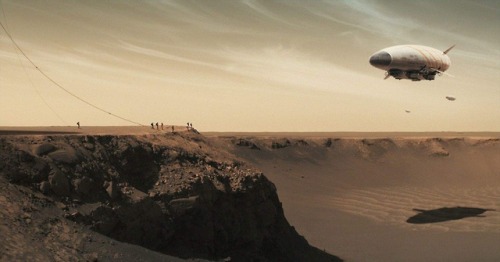
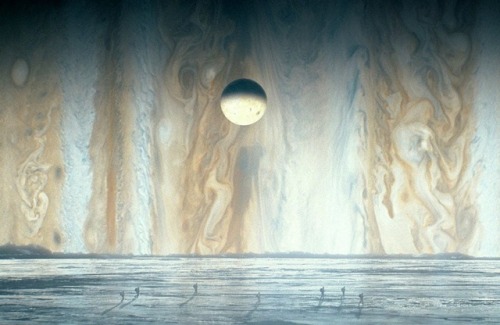

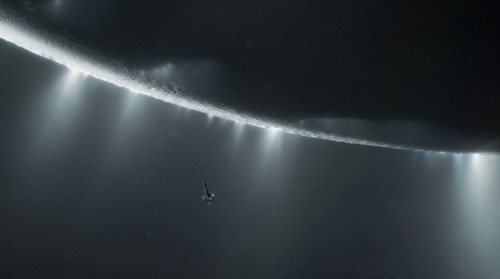
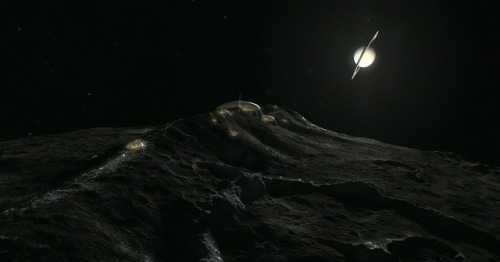
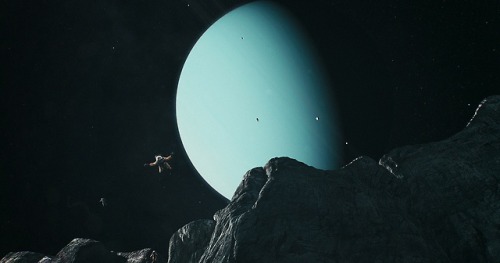


Will we one day explore the worlds of our solar system? How long will this take?
We have a diversity of worlds in our solar system. Majestic places…
Imagine being able to visit Mars and its hostile climate. Imagine being able to visit the moons of Jupiter, observe Io: the volcanic moon, Europa, the frozen moon and Ganymede a moon larger than Mercury itself and that has its own magnetic field. Imagine visiting the moons of Saturn and maybe passing close to your rings… Imagine orbiting or floating through Titan’s atmosphere and closely watching its lakes and seas of methane and liquid ethane. Imagine getting to know the geysers of Enceladus, the valleys of Tethys, and the craters of Mimas… Imagine being able to see the moons of Uranus and have a view of Verona Rupes, the largest cliff of the solar system, located in Miranda. Imagine being able to be in Triton and to be able to observe the cold and azualdo Neptune in the sky…










(Source)


HiPOD (31 August 2018) Dunes in South Xainza Crater
– They look so innocent… (270 km above the surface. Black and white is less than 5 km across; enhanced color is less than 1 km.)
NASA/JPL/University of Arizona
What is Gravitational Lensing?
A gravitational lens is a distribution of matter (such as a cluster of galaxies) between a distant light source and an observer, that is capable of bending the light from the source as the light travels towards the observer. This effect is known as gravitational lensing, and the amount of bending is one of the predictions of Albert Einstein’s general theory of relativity.

This illustration shows how gravitational lensing works. The gravity of a large galaxy cluster is so strong, it bends, brightens and distorts the light of distant galaxies behind it. The scale has been greatly exaggerated; in reality, the distant galaxy is much further away and much smaller. Credit: NASA, ESA, L. Calcada
There are three classes of gravitational lensing:
1° Strong lensing: where there are easily visible distortions such as the formation of Einstein rings, arcs, and multiple images.

Einstein ring. credit: NASA/ESA&Hubble
2° Weak lensing: where the distortions of background sources are much smaller and can only be detected by analyzing large numbers of sources in a statistical way to find coherent distortions of only a few percent. The lensing shows up statistically as a preferred stretching of the background objects perpendicular to the direction to the centre of the lens. By measuring the shapes and orientations of large numbers of distant galaxies, their orientations can be averaged to measure the shear of the lensing field in any region. This, in turn, can be used to reconstruct the mass distribution in the area: in particular, the background distribution of dark matter can be reconstructed. Since galaxies are intrinsically elliptical and the weak gravitational lensing signal is small, a very large number of galaxies must be used in these surveys.

The effects of foreground galaxy cluster mass on background galaxy shapes. The upper left panel shows (projected onto the plane of the sky) the shapes of cluster members (in yellow) and background galaxies (in white), ignoring the effects of weak lensing. The lower right panel shows this same scenario, but includes the effects of lensing. The middle panel shows a 3-d representation of the positions of cluster and source galaxies, relative to the observer. Note that the background galaxies appear stretched tangentially around the cluster.
3° Microlensing: where no distortion in shape can be seen but the amount of light received from a background object changes in time. The lensing object may be stars in the Milky Way in one typical case, with the background source being stars in a remote galaxy, or, in another case, an even more distant quasar. The effect is small, such that (in the case of strong lensing) even a galaxy with a mass more than 100 billion times that of the Sun will produce multiple images separated by only a few arcseconds. Galaxy clusters can produce separations of several arcminutes. In both cases the galaxies and sources are quite distant, many hundreds of megaparsecs away from our Galaxy.
Gravitational lenses act equally on all kinds of electromagnetic radiation, not just visible light. Weak lensing effects are being studied for the cosmic microwave background as well as galaxy surveys. Strong lenses have been observed in radio and x-ray regimes as well. If a strong lens produces multiple images, there will be a relative time delay between two paths: that is, in one image the lensed object will be observed before the other image.

As an exoplanet passes in front of a more distant star, its gravity causes the trajectory of the starlight to bend, and in some cases results in a brief brightening of the background star as seen by a telescope. The artistic concept illustrates this effect. This phenomenon of gravitational microlensing enables scientists to search for exoplanets that are too distant and dark to detect any other way.Credits: NASA Ames/JPL-Caltech/T. Pyle
Explanation in terms of space–time curvature

Simulated gravitational lensing by black hole by: Earther
In general relativity, light follows the curvature of spacetime, hence when light passes around a massive object, it is bent. This means that the light from an object on the other side will be bent towards an observer’s eye, just like an ordinary lens. In General Relativity the speed of light depends on the gravitational potential (aka the metric) and this bending can be viewed as a consequence of the light traveling along a gradient in light speed. Light rays are the boundary between the future, the spacelike, and the past regions. The gravitational attraction can be viewed as the motion of undisturbed objects in a background curved geometry or alternatively as the response of objects to a force in a flat geometry.

A galaxy perfectly aligned with a supernova (supernova PS1-10afx) acts as a cosmic magnifying glass, making it appear 100 billion times more dazzling than our Sun. Image credit: Anupreeta More/Kavli IPMU.
To learn more, click here.
What is a Wormhole?
Wormholes were first theorized in 1916, though that wasn’t what they were called at the time. While reviewing another physicist’s solution to the equations in Albert Einstein’s theory of general relativity, Austrian physicist Ludwig Flamm realized another solution was possible. He described a “white hole,” a theoretical time reversal of a black hole. Entrances to both black and white holes could be connected by a space-time conduit.

In 1935, Einstein and physicist Nathan Rosen used the theory of general relativity to elaborate on the idea, proposing the existence of “bridges” through space-time. These bridges connect two different points in space-time, theoretically creating a shortcut that could reduce travel time and distance. The shortcuts came to be called Einstein-Rosen bridges, or wormholes.

Certain solutions of general relativity allow for the existence of wormholes where the mouth of each is a black hole. However, a naturally occurring black hole, formed by the collapse of a dying star, does not by itself create a wormhole.
Wormholes are consistent with the general theory of relativity, but whether wormholes actually exist remains to be seen.

A wormhole could connect extremely long distances such as a billion light years or more, short distances such as a few meters, different universes, or different points in time
For a simplified notion of a wormhole, space can be visualized as a two-dimensional (2D) surface. In this case, a wormhole would appear as a hole in that surface, lead into a 3D tube (the inside surface of a cylinder), then re-emerge at another location on the 2D surface with a hole similar to the entrance. An actual wormhole would be analogous to this, but with the spatial dimensions raised by one. For example, instead of circular holes on a 2D plane, the entry and exit points could be visualized as spheres in 3D space.

Science fiction is filled with tales of traveling through wormholes. But the reality of such travel is more complicated, and not just because we’ve yet to spot one.

The first problem is size. Primordial wormholes are predicted to exist on microscopic levels, about 10–33 centimeters. However, as the universe expands, it is possible that some may have been stretched to larger sizes.
Another problem comes from stability. The predicted Einstein-Rosen wormholes would be useless for travel because they collapse quickly.

“You would need some very exotic type of matter in order to stabilize a wormhole,” said Hsu, “and it’s not clear whether such matter exists in the universe.”
But more recent research found that a wormhole containing “exotic” matter could stay open and unchanging for longer periods of time.

Exotic matter, which should not be confused with dark matter or antimatter, contains negative energy density and a large negative pressure. Such matter has only been seen in the behavior of certain vacuum states as part of quantum field theory.
If a wormhole contained sufficient exotic matter, whether naturally occurring or artificially added, it could theoretically be used as a method of sending information or travelers through space. Unfortunately, human journeys through the space tunnels may be challenging.

Wormholes may not only connect two separate regions within the universe, they could also connect two different universes. Similarly, some scientists have conjectured that if one mouth of a wormhole is moved in a specific manner, it could allow for time travel.

Although adding exotic matter to a wormhole might stabilize it to the point that human passengers could travel safely through it, there is still the possibility that the addition of “regular” matter would be sufficient to destabilize the portal.
Today’s technology is insufficient to enlarge or stabilize wormholes, even if they could be found. However, scientists continue to explore the concept as a method of space travel with the hope that technology will eventually be able to utilize them.
source
source
images: x, x, x, x, x, x, x, x, x










Here’s Why Black Holes Are Crullers, Not Donuts
“Just a few years ago, we didn’t even know whether it was a certainty that black holes had an event horizon, as we’d never observed one directly. In 2017, a series of observations were finally taken that could settle the issue. After a wait of two years, the first direct image of a black hole was released, and it showed us that the event horizon was, in fact, real as predicted, and that its properties agreed with Einstein’s predictions.
Now, another two years later, the polarization data has been added into the fold, and we can now reconstruct the magnetic properties of the plasma surrounding the black hole, along with how those features are imprinted onto the emitted photons. We still only have the one black hole that’s been directly imaged, but we can see how the light, the polarization, and the magnetic properties of the plasma surrounding the event horizon all change over time.”
You’ve seen the photo, but have you learned the science? Black holes are crullers, not donuts, and magnetized plasma is the reason why.
How Big is Our Galaxy, the Milky Way?
When we talk about the enormity of the cosmos, it’s easy to toss out big numbers – but far harder to wrap our minds around just how large, how far and how numerous celestial bodies like exoplanets – planets beyond our solar system – really are.
So. How big is our Milky Way Galaxy?
We use light-time to measure the vast distances of space.
It’s the distance that light travels in a specific period of time. Also: LIGHT IS FAST, nothing travels faster than light.

How far can light travel in one second? 186,000 miles. It might look even faster in metric: 300,000 kilometers in one second. See? FAST.

How far can light travel in one minute? 11,160,000 miles. We’re moving now! Light could go around the Earth a bit more than 448 times in one minute.

Speaking of Earth, how long does it take light from the Sun to reach our planet? 8.3 minutes. (It takes 43.2 minutes for sunlight to reach Jupiter, about 484 million miles away.) Light is fast, but the distances are VAST.

In an hour, light can travel 671 million miles. We’re still light-years from the nearest exoplanet, by the way. Proxima Centauri b is 4.2 light-years away. So… how far is a light-year? 5.8 TRILLION MILES.

A trip at light speed to the very edge of our solar system – the farthest reaches of the Oort Cloud, a collection of dormant comets way, WAY out there – would take about 1.87 years.
Our galaxy contains 100 to 400 billion stars and is about 100,000 light-years across!
One of the most distant exoplanets known to us in the Milky Way is Kepler-443b. Traveling at light speed, it would take 3,000 years to get there. Or 28 billion years, going 60 mph. So, you know, far.
SPACE IS BIG.

Read more here: go.nasa.gov/2FTyhgH
Make sure to follow us on Tumblr for your regular dose of space: http://nasa.tumblr.com.
-
 cernunnos1990 reblogged this · 7 months ago
cernunnos1990 reblogged this · 7 months ago -
 cernunnos1990 liked this · 7 months ago
cernunnos1990 liked this · 7 months ago -
 cernunnos1990 reblogged this · 9 months ago
cernunnos1990 reblogged this · 9 months ago -
 quamatoc reblogged this · 1 year ago
quamatoc reblogged this · 1 year ago -
 reyalinaa liked this · 2 years ago
reyalinaa liked this · 2 years ago -
 saturn-princessa reblogged this · 2 years ago
saturn-princessa reblogged this · 2 years ago -
 a-dream-seeking-light reblogged this · 2 years ago
a-dream-seeking-light reblogged this · 2 years ago -
 infiniteproxy reblogged this · 3 years ago
infiniteproxy reblogged this · 3 years ago -
 alchemist-architect liked this · 4 years ago
alchemist-architect liked this · 4 years ago -
 the-names-kay reblogged this · 4 years ago
the-names-kay reblogged this · 4 years ago -
 the-names-kay liked this · 4 years ago
the-names-kay liked this · 4 years ago -
 hydrophiusdream liked this · 4 years ago
hydrophiusdream liked this · 4 years ago -
 heatandapathy reblogged this · 4 years ago
heatandapathy reblogged this · 4 years ago -
 kenny-wind-yt reblogged this · 4 years ago
kenny-wind-yt reblogged this · 4 years ago -
 kenny-wind-yt liked this · 4 years ago
kenny-wind-yt liked this · 4 years ago -
 tumblemew reblogged this · 4 years ago
tumblemew reblogged this · 4 years ago -
 tumblemew liked this · 4 years ago
tumblemew liked this · 4 years ago -
 wanderer001 liked this · 4 years ago
wanderer001 liked this · 4 years ago -
 rainman696 reblogged this · 4 years ago
rainman696 reblogged this · 4 years ago -
 therandominternetperson liked this · 4 years ago
therandominternetperson liked this · 4 years ago -
 petrichormeraki liked this · 4 years ago
petrichormeraki liked this · 4 years ago -
 ekdromoi liked this · 4 years ago
ekdromoi liked this · 4 years ago -
 eatmyassits160cals liked this · 4 years ago
eatmyassits160cals liked this · 4 years ago -
 luckferatu liked this · 4 years ago
luckferatu liked this · 4 years ago -
 illyriashade56 liked this · 4 years ago
illyriashade56 liked this · 4 years ago -
 deadassdiaspore reblogged this · 4 years ago
deadassdiaspore reblogged this · 4 years ago -
 clanoffelidae liked this · 4 years ago
clanoffelidae liked this · 4 years ago -
 327-46c reblogged this · 4 years ago
327-46c reblogged this · 4 years ago -
 calmingstuff reblogged this · 4 years ago
calmingstuff reblogged this · 4 years ago -
 davidareyouhuman liked this · 4 years ago
davidareyouhuman liked this · 4 years ago -
 manebioniclegali reblogged this · 4 years ago
manebioniclegali reblogged this · 4 years ago -
 gracklesong reblogged this · 4 years ago
gracklesong reblogged this · 4 years ago -
 kumelstaranos reblogged this · 4 years ago
kumelstaranos reblogged this · 4 years ago -
 kumelstaranos liked this · 4 years ago
kumelstaranos liked this · 4 years ago -
 saltwaterspectre reblogged this · 4 years ago
saltwaterspectre reblogged this · 4 years ago -
 merdujour liked this · 4 years ago
merdujour liked this · 4 years ago -
 torrentab liked this · 4 years ago
torrentab liked this · 4 years ago -
 fuzzlespup liked this · 4 years ago
fuzzlespup liked this · 4 years ago -
 sirikenobilegends reblogged this · 4 years ago
sirikenobilegends reblogged this · 4 years ago -
 sirikenobilegends liked this · 4 years ago
sirikenobilegends liked this · 4 years ago -
 birdherd reblogged this · 4 years ago
birdherd reblogged this · 4 years ago -
 day-colors liked this · 4 years ago
day-colors liked this · 4 years ago -
 unproduciblesmackdown reblogged this · 4 years ago
unproduciblesmackdown reblogged this · 4 years ago -
 findingsolaceinyoureyes reblogged this · 4 years ago
findingsolaceinyoureyes reblogged this · 4 years ago -
 findingsolaceinyoureyes liked this · 4 years ago
findingsolaceinyoureyes liked this · 4 years ago -
 corvus-clorox reblogged this · 4 years ago
corvus-clorox reblogged this · 4 years ago